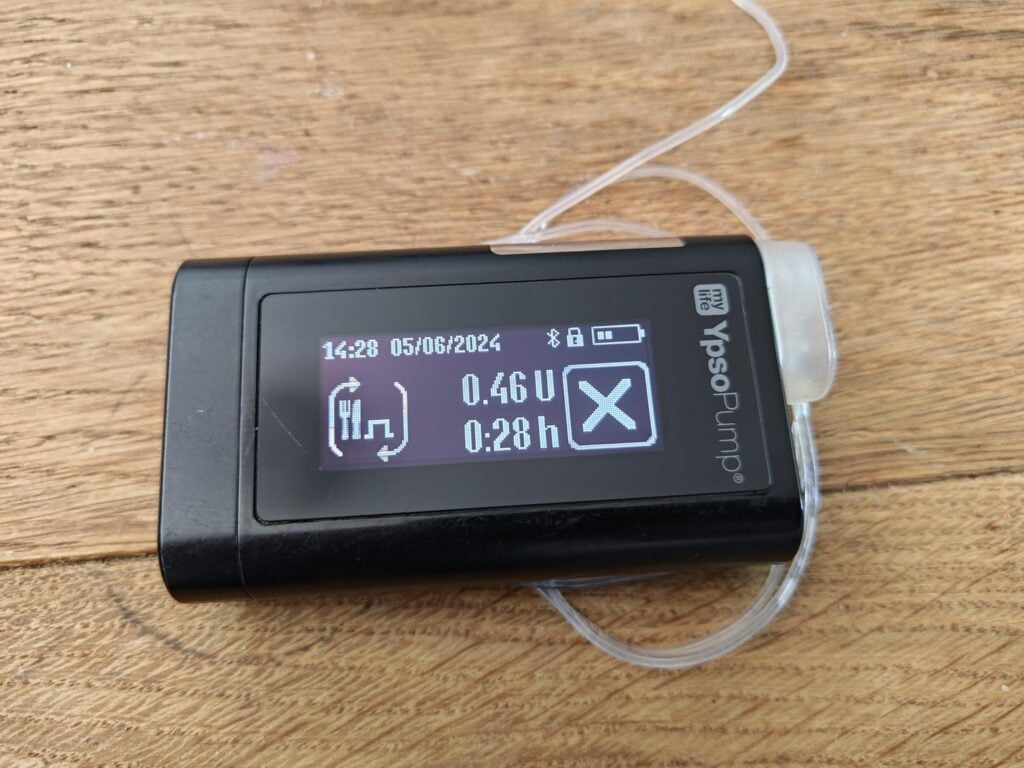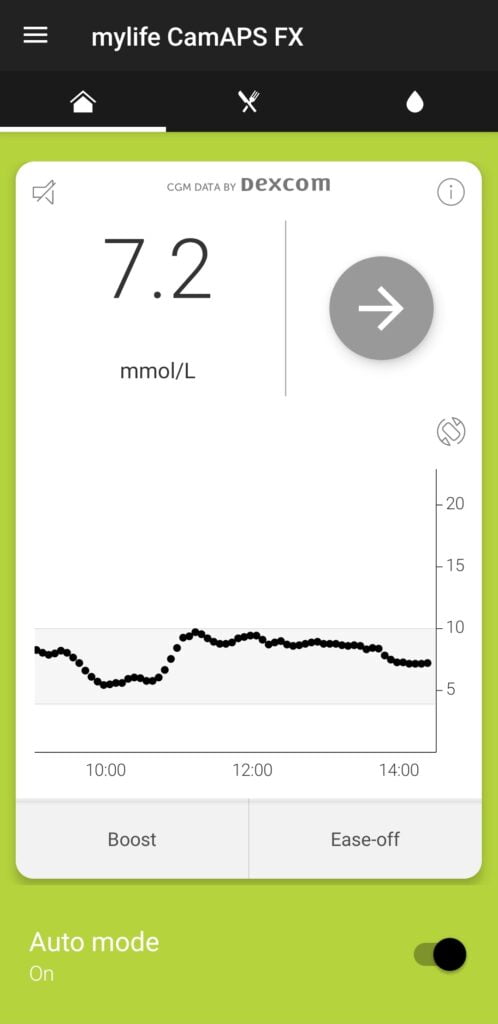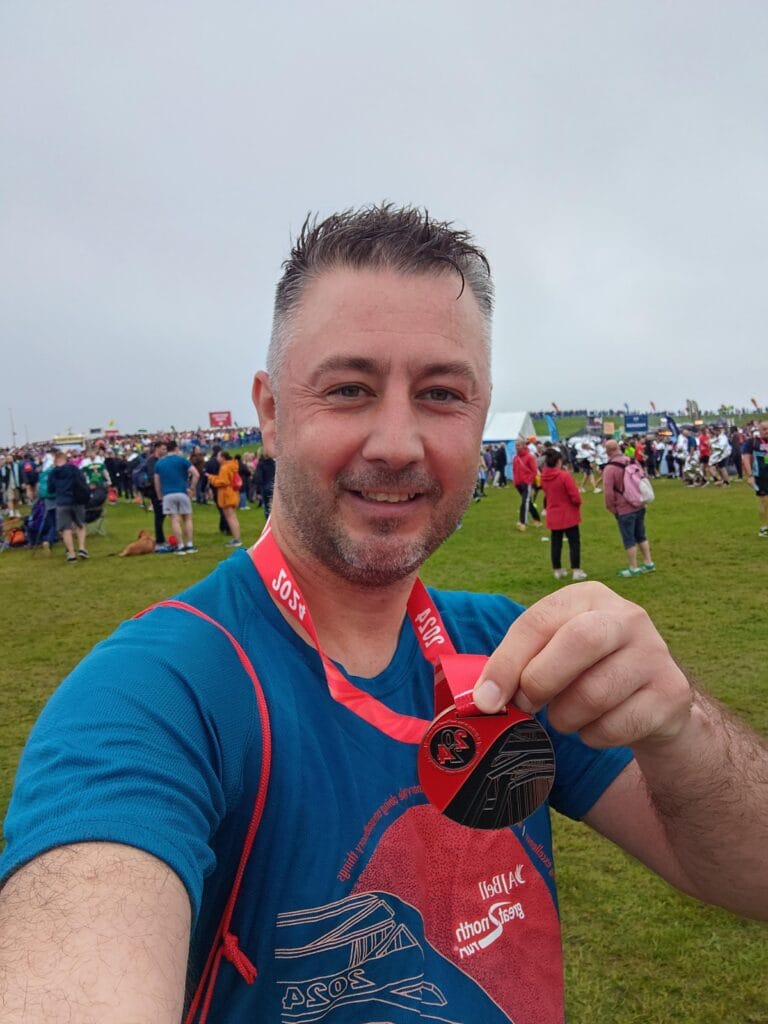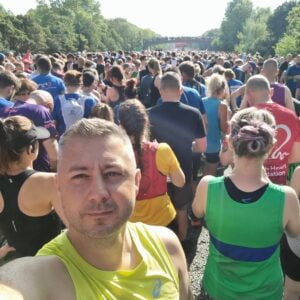Maintaining Positive Mental Health During Injury – Living with Type 1 Diabetes
Life often throws unexpected challenges our way and for those of us managing Type 1 diabetes, an injury can feel like an added hurdle in the life of carb counting, insulin adjustments, hypo treatments and more! After the high of completing the Great North Run half-marathon back in September, I’ve found my football and running routine disrupted by a combination of injuries; a small muscle tear in my thigh, painful arthritis in a big toe joint, and the reoccurrence of an old footballing ankle injury. Coupled with the demands of work and family, this has meant a bit of a tough adjustment to life in general.
One of my current work roles involves recruiting and training volunteers with a passion for health and wellbeing. Part of the training I deliver focusses on the 5 Ways to Wellbeing as a way to support, improve and sustain positive mental health.
The 5 Ways to Wellbeing concept isn’t something new, in fact it’s been around (or at least documented) since 2008 when it was developed by the New Economics Foundation. There’s a report on the background and development of 5 Ways to Wellbeing at Five ways to wellbeing: New applications, new ways of thinking | New Economics Foundation.
Essentially the 5 Ways to Wellbeing involve:
1. Connect with Others
Staying socially connected has been crucial. Sharing my experiences with family, friends, colleagues and even online communities has kept me engaged in topics I enjoy and helped me to appreciate the things that are working well in my life. It’s sometimes reassuring to know I’m not alone in facing setbacks. These conversations have not only lifted my spirits but also reminded me that injuries, while frustrating, are a natural part of an active lifestyle.
2. Be Active (in Other Ways)
With a trio of injuries to manage, I’ve had to adjust my approach to physical activity. Running may be on hold, but I’ve found ways to keep moving without straining my injuries. Walking, coaching our local kid’s football team and coaching and playing table tennis have been my go-to activities. These have helped to maintain some level of fitness, support my diabetes management and importantly keep those endorphins flowing.
3. Take Notice
In the rush of everyday life, it’s easy to overlook the small joys. I’ve made a conscious effort to be present, whether it’s appreciating the autumn / winter crisp morning air on a walk or savouring a quiet moment with my family (note – not a lot of them exist with a 12-year-old and pair of 9-year-old twins!). Just taking notice of the good things has been really helpful in managing the mental load of type 1 diabetes and the frustration of being sidelined by injuries.
4. Keep Learning
With the extra time not spent running, I’ve dived into learning more about injury recovery and long-term strategies for managing arthritis. Understanding my body’s limits and how to work within them has been empowering. I’ve also taken the opportunity to explore other interests unrelated to fitness—keeping my mind active has been a welcome distraction.
5. Give to Others
Supporting others can be really uplifting. Sharing advice or listening to someone else’s challenges reminds me of the strength we all have to persevere. My work life interactions are often with people facing various challenges in life and I’m fortunate to be in a position to help or facilitate the help they need. Spending quality time with my family has also maintained a sense of purpose, there’s nothing like knowing the kids need to be somewhere “now” to feel needed!
I’ve taken on a couple of volunteer sports coaching roles in the form of assisting coaching my eldest’s football team and also leading on the junior beginner’s session at our local table tennis club. It feels good to give and also feels good to see the enjoyment on the kid’s faces whilst knowing that I’m helping (trying) to shape these young people into positive humans.
Managing my Type 1 Diabetes During Injury
Adjusting my diabetes management has been another layer of the challenge. Reduced activity often means tweaking insulin doses and paying closer attention to my blood glucose levels. I couldn’t be more thankful for the current technology I’m using. The Hybrid Closed Loop system of Ypsopump insulin pump combined with the CamAPS FX app and Dexcom G6 CGM is as close to “set and forget” as I’ve ever used. I’m still hitting 85 – 90% Time in Range (TIR) and HbA1C of 46 mmol/mol (6.4% in old numbers) despite some increasing insulin resistance with reduced exercise levels. Personally, I’d like to get that HbA1C down closer to 40 mmol/mol but given current circumstances I’m certainly taking the current numbers.
From a mental health point of view just letting the system do its thing and being safe in the knowledge that overnight hypos and hypers are pretty much eradicated for me is Holy Grail stuff! I’m consciously “thinking” about my type 1 diabetes less and less and still getting very good TIR and HbA1C. This really all adds up to less mental burden and an ability to enjoy things outside of thinking about type 1 diabetes.
Staying Positive
In all honesty the injuries have been frustrating, they’ve also been a reminder of how much I value running and my overall health. These couple of months have been an opportunity to recharge, learn, and set new goals. While I may not be lacing up my running shoes and football boots just yet, I’m confident this pause will make my eventual return all the more meaningful…. and something I’m actually looking forward to!
If you’re navigating a similar situation, remember to be kind to yourself. Use this time to focus on what you can do and lean on the people and tools around you. Have a quick focus on those 5 Ways to Wellbeing. Injury is usually temporary, but the habits we build during recovery can last a lifetime. Try to stay positive, I know it’s not always easy.










Leave a Reply